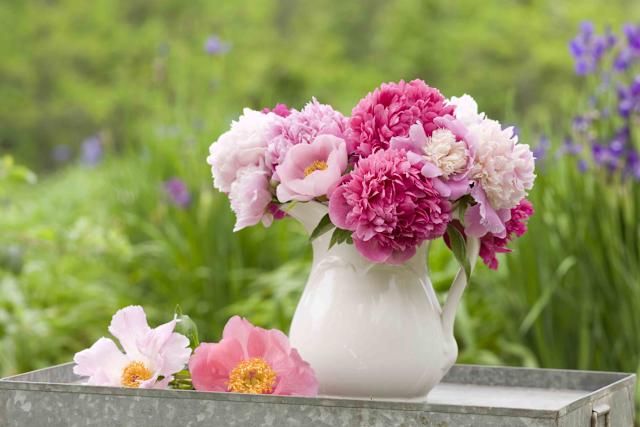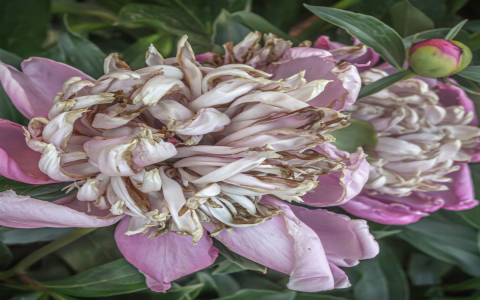Alright, so my peonies just finished their spectacular show for the year. Every time they bloom, I’m just wowed, but then comes the part where the magic fades, and those gorgeous flowers start looking a bit, well, spent. That’s my cue to get in there and start the after-party care, as I like to call it. It’s not just about making things look tidy; it’s really about setting them up for an even better show next year.
What I Do With Those Fading Beauties
First things first, I tackle the dead flowers. I used to be a bit lazy about this, thinking, “Oh, they’ll just drop off.” But they don’t, not really. They just hang there, looking sad and can even start to get a bit moldy if the weather’s damp. So, I grab my garden snips – nothing fancy, just a sharp pair – and I go around snipping off every single spent bloom. I don’t just nip the head off; I usually cut the stem back to the first set of full, healthy leaves. It just looks neater, and I figure it stops the plant from wasting energy trying to make seeds where the flower was. Instead, that energy can go back into the roots for next year’s growth. Trust me, this simple step makes a big difference.

Keeping Them Hydrated
Now, just because the flowers are gone doesn’t mean the plant is done for the season. Those leaves are still working hard! So, I keep an eye on the watering, especially if we hit a dry spell. They’re busy storing up energy for the winter and for that big burst of growth in the spring. I learned this the hard way a few years back when I neglected them after blooming, and the next year’s show was definitely a bit underwhelming. So, I make sure they get a good, deep drink every now and then if Mother Nature isn’t helping out. Not waterlogged, mind you, but consistently moist.
A Little Bit of Food, Maybe
Do I feed them after they bloom? Sometimes, yes. It really depends on how they performed and what the soil’s like. If they put on a massive display, I figure they’ve used up a fair bit of oomph. So, what I do is I might give them a light feeding. I’m not one for complicated fertilizers. Usually, a bit of good compost or some well-rotted manure scratched gently into the soil around the plant – not right up against the stems – does the trick. I feel like it gives the roots a bit of a boost as they’re getting ready for their winter sleep and gearing up for next spring.
The Big Question: The Foliage
This is where I see a lot of folks get a bit antsy. Those big, lush leaves, even after the flowers are long gone, are super important. They’re like the plant’s kitchen, photosynthesizing and making food to store in the roots. Cutting them back too early? Big mistake in my book. You’re basically starving the plant of next year’s energy.
So, what I do is I leave all that foliage completely alone all summer and well into the autumn. Let it do its job. It’ll start to yellow, maybe get a few spots, that’s all part of the process. I only grab my shears when the leaves have really died back, usually after we’ve had a good hard frost that’s turned them all brown and crispy. Then, and only then, I cut everything down to about an inch or two from the ground. And here’s a key thing: I make sure to clear away all that dead foliage. Don’t leave it there over winter. It’s just an invitation for pests or diseases to set up camp. A clean bed is a happy bed, I always say.
- Wait for frost to signal cutting time.
- Cut stems down close to the ground.
- Always clear away the dead leaves.
A Quick Health Check
While I’m doing all this, especially the deadheading and the final cut-back, I always take a moment to give the plants a good look over. Check for any signs of trouble, you know? Peonies are pretty tough, but sometimes you might see a bit of powdery mildew, especially if it’s been a humid summer with not much air moving around. If I spot any really sickly-looking leaves during the summer, I’ll snip them off then and there. But mostly, that big autumn cleanup takes care of potential problems before they start.
And that’s pretty much my routine for peony care after they bloom. It’s not a ton of work, but these little steps, I’ve found, make a huge difference in how they perform the following year. It’s all about helping them recharge and get ready for another stunning display. And honestly, seeing those first peony buds unfurl in spring makes every bit of this effort totally worth it.





















